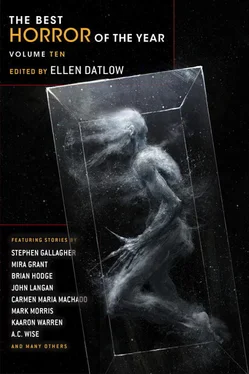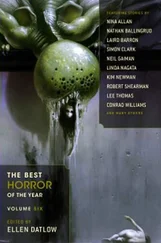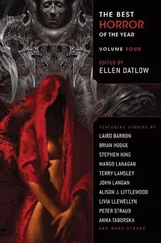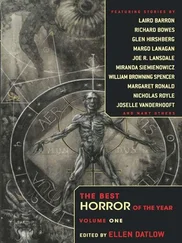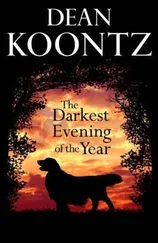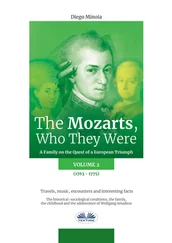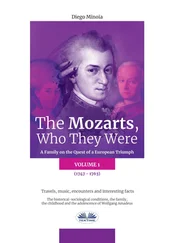Каарон Уоррен - The Best Horror of the Year Volume Ten
Здесь есть возможность читать онлайн «Каарон Уоррен - The Best Horror of the Year Volume Ten» весь текст электронной книги совершенно бесплатно (целиком полную версию без сокращений). В некоторых случаях можно слушать аудио, скачать через торрент в формате fb2 и присутствует краткое содержание. Город: New York, Год выпуска: 2018, ISBN: 2018, Издательство: Night Shade Books, Жанр: Ужасы и Мистика, на английском языке. Описание произведения, (предисловие) а так же отзывы посетителей доступны на портале библиотеки ЛибКат.
- Название:The Best Horror of the Year Volume Ten
- Автор:
- Издательство:Night Shade Books
- Жанр:
- Год:2018
- Город:New York
- ISBN:978-1-5107-1667-4
- Рейтинг книги:4 / 5. Голосов: 1
-
Избранное:Добавить в избранное
- Отзывы:
-
Ваша оценка:
- 80
- 1
- 2
- 3
- 4
- 5
The Best Horror of the Year Volume Ten: краткое содержание, описание и аннотация
Предлагаем к чтению аннотацию, описание, краткое содержание или предисловие (зависит от того, что написал сам автор книги «The Best Horror of the Year Volume Ten»). Если вы не нашли необходимую информацию о книге — напишите в комментариях, мы постараемся отыскать её.
The Best Horror of the Year Volume Ten — читать онлайн бесплатно полную книгу (весь текст) целиком
Ниже представлен текст книги, разбитый по страницам. Система сохранения места последней прочитанной страницы, позволяет с удобством читать онлайн бесплатно книгу «The Best Horror of the Year Volume Ten», без необходимости каждый раз заново искать на чём Вы остановились. Поставьте закладку, и сможете в любой момент перейти на страницу, на которой закончили чтение.
Интервал:
Закладка:
In particular, I was seeking the origins of the beautiful ode in which the singer calls for all brothers and sisters, mothers and sinners to go down to the river to pray. Of most interest was a variation in the lyrics that I could not understand given its Judeo-Christian origins: the use in one line of the term “starry crown.”
…As I went down to the river to pray,
studying about that good ole way,
and who should wear the starry crown.
More modern versions of the hymn use the words “thorny crown” to reference Christ’s crown of thorns during the crucifixion. These lyrics would appear to make the most sense in the context of the song, so the use of “starry crown” in the older and possibly more genuine versions of the hymn was a puzzle. Secondly, the term presents a question of who should wear the crown. If this were a Christian hymn, that question should never be asked; Christ would wear the thorny crown and, one would presume, any crown. So the line presents a second mystery as to why and how someone other than Christ would be picked to wear a starry crown and for what purpose. I could find no relevant Biblical references to a starry crown and thus I was left with a mystery as to what its original meaning was and why it had been changed.
The earliest recognized version of the song was published in 1867 by G. H. Allan in his Slave Songs of The United States . But in his personal diary writings Allan referenced an earlier and heretofore unknown version of the song, recorded on paper by Llewellyn Cobb. Allan wrote that Cobb had mailed him the song in order that he might include it in Slave Songs , but that the version was “somewhat unbalanced” and he made changes to the music. Cobb had lived in that southern stronghold of South Carolina, long before the Reconstruction and interest in slavery’s subculture developed.
I travelled to that state, driving to Evanstown, where Cobb had lived. I found residence in an old plantation home turned into a bed & breakfast, Ashcroft Manor, named after the aristocratic family that built and ran the plantation. It was an effort to immerse myself in the antebellum culture, thinking that perhaps the scenery and living situation would stir my mind to new connections and insights into this era so far removed from modern life.
The proprietors, Ted and Mary Wallstone, were an elderly couple who prided themselves on keeping the plantation as close to its original form as possible.
“We finally sprung for indoor plumbing in the eighties,” Ted told me. “Can’t tell you how much business we lost before then because of the outhouses, but I just didn’t want to change the structure, putting holes in the walls and everything. To me, it would be like desecrating a church, ya know?”
I nodded in agreement but his relation of a slave plantation to a church, and the rheumy, wistful look in his eyes left me feeling unsettled.
I told him of my research project, leaving out the specific mystery of the starry crown, but hopeful that he could provide some direction in this unfamiliar place.
“Ah… that’s a beautiful old hymn.” Ted said. “My God! It stays with you, doesn’t it?”
“It was first written on paper right here in this area,” I told him.
He reflected a moment. “Doesn’t surprise me.”
“Do you remember when you first heard the song?”
“As a child, many years ago. Of course, back then, most people called it ‘Down to the Valley,’ not ‘The Good Old Way.’”
I’d read this previously. There were several names and incarnations. ‘The Good Old Way’ was the most historically prevalent, which only deepened the mystery. “I thought this was relating to a baptism, so it’d make sense, going down to the river. But why would they go down to a valley to pray?”
He raised his eyebrows at me. “Well, most rivers are in valleys, city-boy.”
“Ah, of course. Are there still river baptisms here?”
“First Sunday of every month,” he said proudly.
“Where are they held? I’d like to witness one.”
“Well… the Green River is where most congregations go. But there are lots of other creeks and rivers around here too, and plenty of smaller congregations that use them for their own services, so could be anywhere. But the Green River is probably the best bet.”
I thanked Ted for his time and hospitality. He wished me luck on my search but left me with a bit of “advice”:
“Careful who you question around here. People in these parts are very private. They hold their beliefs sacred and can be pretty suspicious when outsiders come asking questions. Even if it’s about an old song.”
He patted me on the shoulder and went about his business, maintaining a home that had previously been the site of the horrendous rites of slavery.
I slept badly that night. There were ghosts in the air.

Finding a Baptist church in the south is not a challenge. Rather, the challenge was trying to find where to start. One could throw a rock and hit a Baptist church, and the rock would bounce off that church and hit another one right next door. On nearly every stretch of road and corner there stood a large white building with a steeple, a converted warehouse with a Christ-proclaiming sign, or some old, tiny schoolhouse that reached back into the days of the colonies, but now proclaimed, “Pancake Breakfasts and Bible Studies on Wednesdays.”
I began to survey each of them, explaining my project and inquiring as to their river baptismal services. The pastors and reverends were helpful and willing. Naturally, they all knew of the song but very few could point me in any direction as to its origin or meaning. Most said it was a baptismal hymn, but there was no mention of actual baptism in the verses. Just going down to a river or valley and pondering who should wear a starry crown. The reverends grew more silent when I mentioned the starry crown aspect of the mystery. None of them, for all their theology, could give me an adequate explanation as to the meaning of those words and what Biblical reference it came from.
I spent several days in the city hall’s file cabinets of records, researching churches and Llewellyn Cobb’s residence 150 years ago. His home wasn’t in the town but in the surrounding hills that had once been cultivated with crops harvested by slaves. An elderly woman at the clerk’s desk—a withered crone with fake teeth and the long, drawn-out manner of a former southern belle—asked what I was searching for, and I gave her a brief summary.
“You should go see Thomas Jeery over at First Baptist,” she said.
“I feel like I’ve been to every church in the state at this point,” I replied with a smile.
“Not this one,” she said. “Thomas is one hundred and one years old. His parents were children when freed after the Civil War, and his family have lived in these parts ever since. He could probably tell you something about its history.”
“Where can I find him?”
“Not around here. You have to go into the hills. First Baptist is the oldest original church in this area. It’s only the size of this here room, not like all those big churches the size of airports that keep springing up. But they have the most wonderful choir. You should hear them sing at night. You hear it all through the hills. It’s like hearing a lullaby sung by God.”
Her eyes appeared to wane and turn in the deepened sockets of her furrowed visage and she fell silent. She was smiling, but not at me. I turned to look but there was nothing else around.
Fearing that she was suffering a stroke or some other malady, I cautiously asked if she wasn’t feeling well. She did not speak but, standing before me, the old crone began humming a tune—something vaguely familiar which I could not place exactly—perhaps a gloomy bastardization of a song I knew.
Читать дальшеИнтервал:
Закладка:
Похожие книги на «The Best Horror of the Year Volume Ten»
Представляем Вашему вниманию похожие книги на «The Best Horror of the Year Volume Ten» списком для выбора. Мы отобрали схожую по названию и смыслу литературу в надежде предоставить читателям больше вариантов отыскать новые, интересные, ещё непрочитанные произведения.
Обсуждение, отзывы о книге «The Best Horror of the Year Volume Ten» и просто собственные мнения читателей. Оставьте ваши комментарии, напишите, что Вы думаете о произведении, его смысле или главных героях. Укажите что конкретно понравилось, а что нет, и почему Вы так считаете.
